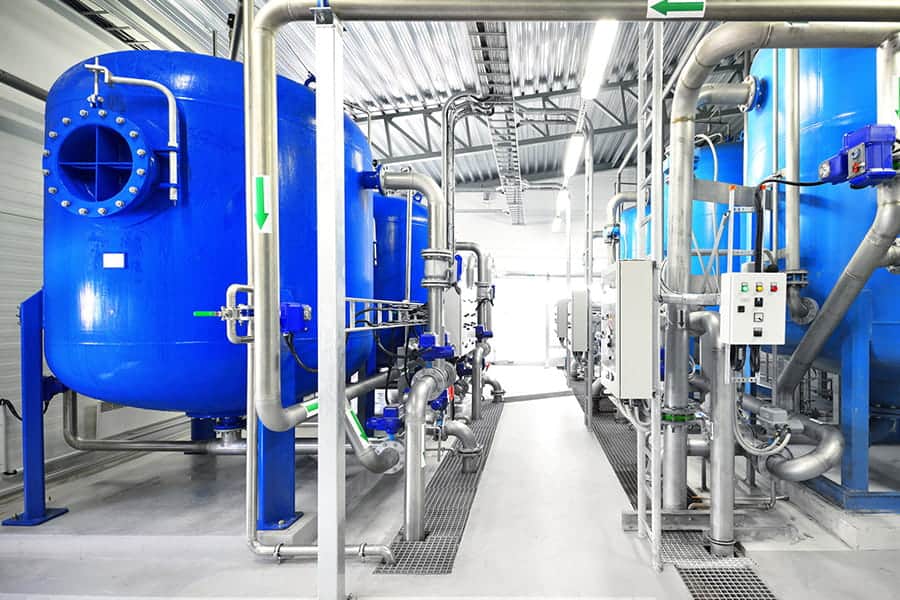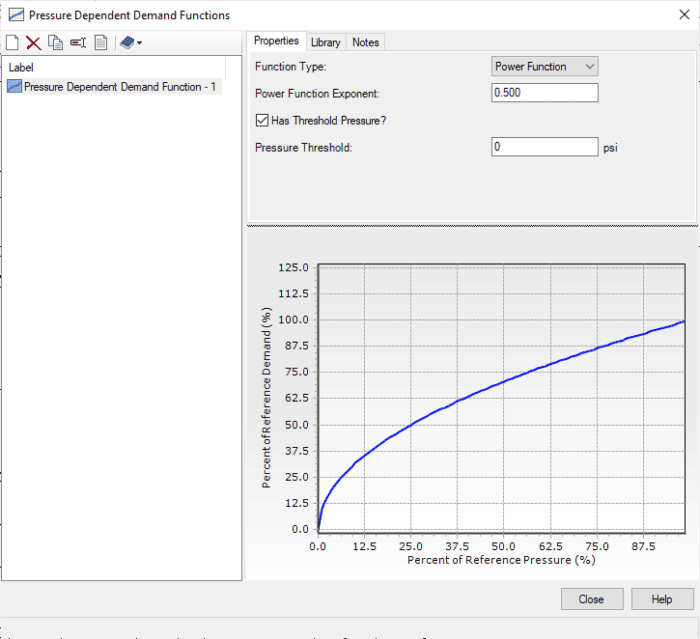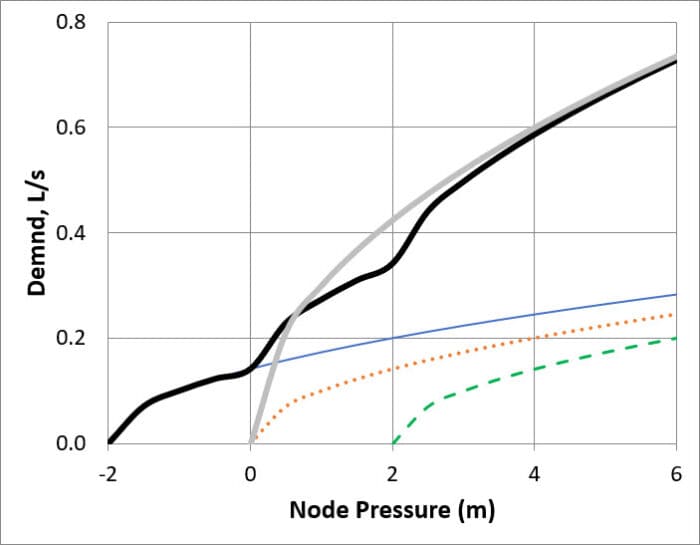In most of our water distribution modeling, we use a demand-driven approach. The user enters a demand, and the model calculates the flows and pressures that correspond to that demand. That’s pretty straightforward, but we know that it isn’t exactly true. Water leaves the plumbing system through orifices and flows through orifices depends on the pressure.
How can we get away with using demand-driven models? There are several reasons. First, the pressure is so high and constant in water systems in most developed countries that the effects of pressure on flow is negligible. Second, most demands are volume-based (baths, dishwashers, washing machines,…) such that, if the flow slows down, the duration of the flow increases so that the total volume flowing through the system doesn’t vary much. Third, if the pressure drops, the customer can open the tap wider. The only demands that are truly pressure-dependent are a leak or an open sprinkler.
Nevertheless, WaterCAD and WaterGEMS can model pressure-dependent demands (PDD) and have been doing so for many years (Wu et al.,). When does PDD become important? The most pressing cases are those where the pressure drops so low that it affects water consumption. There are a few instances. One is the case of a large fire nearby, which will drop the pressure in the area near the fire. Another is a major pipe break and ensuing shutdown, which can cause water to take odd paths through the system, thus dropping the pressure. A third case corresponds to systems in developing parts of the world where the water supply may be intermittent, and pressure can frequently be near or at zero.
Hydraulic models calculate the pressure at junction nodes, and the assumption is that customers associated with that junction have orifices at the same elevation as the node. When pressures are high, the difference between the node and the orifice pressures is negligible. That’s not true at low pressures.
The figure below shows the cross-section of a street where there are some elevation differences. The model node is at the red point in the street, while the pipe is shown in blue. That difference is usually small. However, house A is significantly higher than house B. When the hydraulic grade line (HGL) is at HGL1, orifices in house A will barely deliver any flow even though pressure at the node may be acceptable. When the HGL drops to HGL2, house A will receive no water even though node pressure is positive. When the HGL drops to HGL3, the model would say that no water can be delivered, but house B may still have water.
How can this situation be modeled? The key lies in the PDD function, usually an equation of the form
Q = k P 0.5
Where Q is orifice flow, k = constant depending on orifice characteristics and p = pressure.
The default PDD function in WaterGEMS looks like this (i.e. the orifice emitter equation).
But the orifice equation doesn’t handle the case where there may be many orifices at different locations associated with a model node. When you put all the orifices together, you end up with the graph below. The gray line is the traditional orifice equation. The dotted red line is for an orifice at the elevation of the model node; the blue line is for an orifice located below the node, which can get water when the pressure is negative; and the green dashed line is for an orifice located above the node elevation. Adding those orifices together results in the black line for the overall PDD function.
I was involved in a research study at Wilkes Univ. Where we built a model plumbing system and ran experiments on the relationship between nodal pressure and water delivered. We derived the following equation and verified it with our lab model.
Q = k (H – e(min)) b
Where H = HGL at model node, e(min) = lowest elevation served, b = empirical exponent
Depending on the situation, we found that b could vary between 0.5 and 0.7. You can read the details in our paper (Walski et al. 2019), which won the award for the best paper in the AWWA Water Science Journal that year.
Looking at the black curve in the above figure, the blue component of that curve corresponds to customer orifices below the node. These are rare since most houses are constructed above the street. This means that it’s easy to construct PDD functions in WaterGEMS and WaterCAD using a piecewise PDD function.
What are the practical implications of this work? For normal day demands in strong systems, none. However, when modeling cases described above where pressure can approach zero, the effects can be noticeable. For the case where houses are above the street, system demands may drop to zero in areas even when there may still be some pressure in the water mains. If PDD functions are not corrected, some customers at higher elevations may get little or no water even when the uncorrected model shows that water is available. WaterGEMS and WaterCAD can model these situations and provide insights.
References:
Walski, T. Havard, M., Yankelitis, B., Youells, J., Whitman, B., 2019, “Pressure-dependent demand under pressure-deficient conditions”, AWWA Water Science, doi.org/10.1002/aws2.1135.
Wu, Z., Wang, R., Walski, T., Yang, S., Bowdler, D. and Baggett, C., 2009, “Extended Global Gradient Algorithm for Pressure-Dependent Water Distribution Analysis.” Journal Water Resources Planning and Management, Vol. 135, No. 1.
Want to learn more from our resident water and wastewater expert? Join the Dr. Tom Walski Newsletter today!













